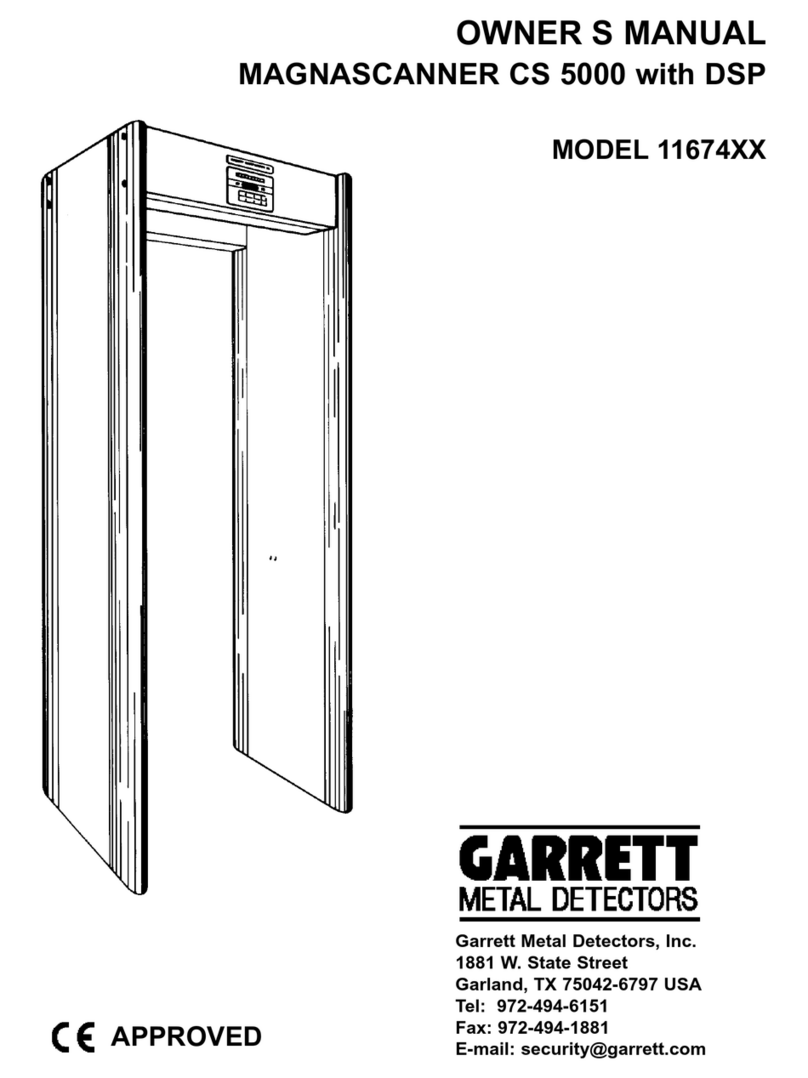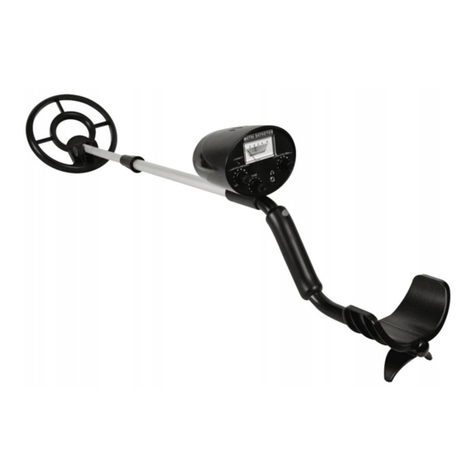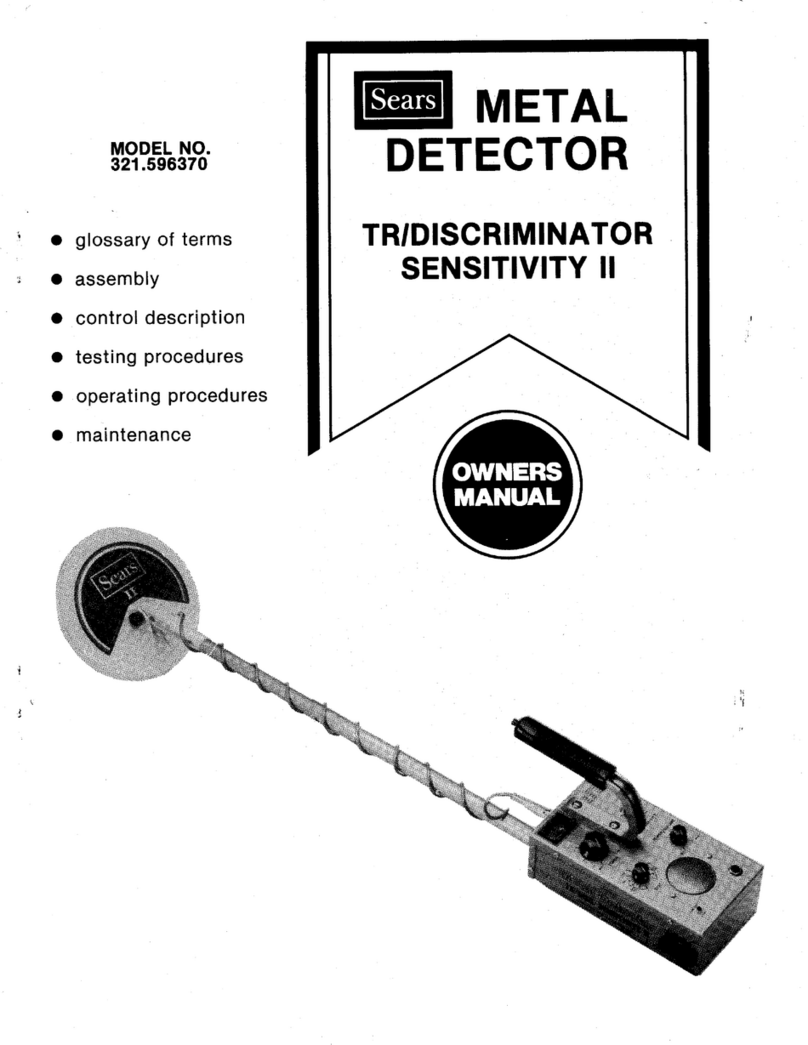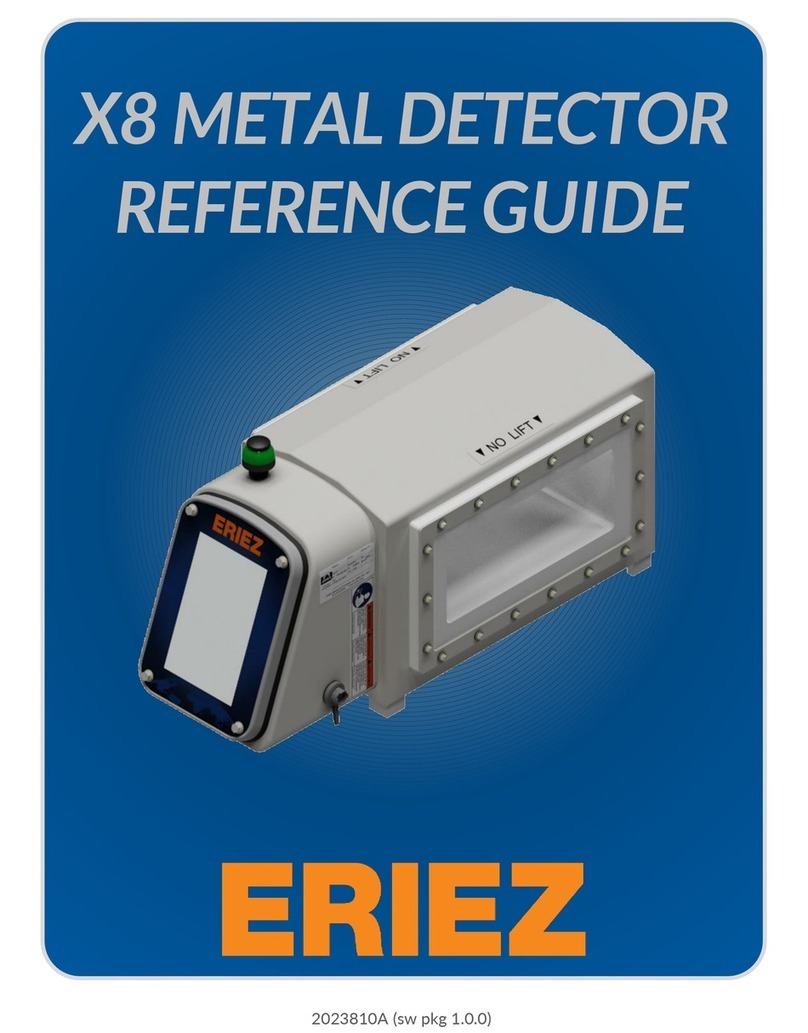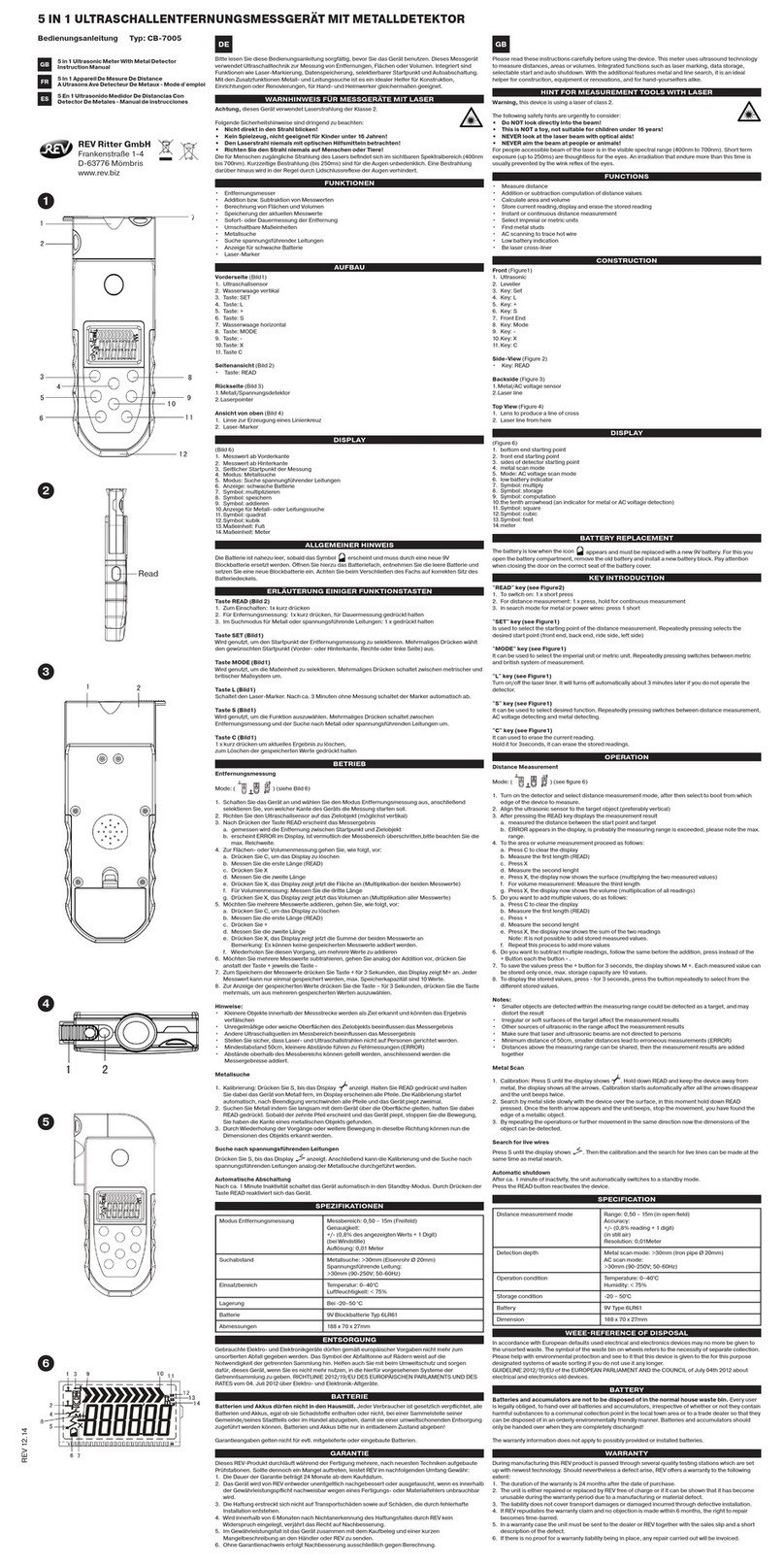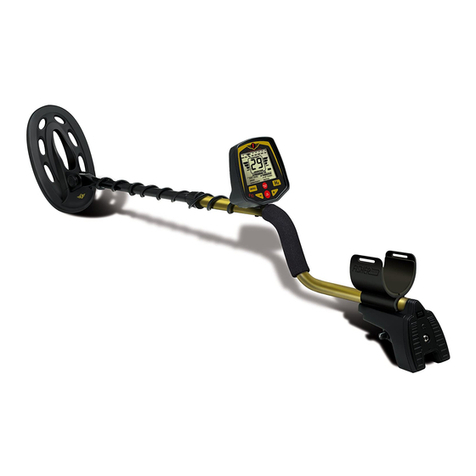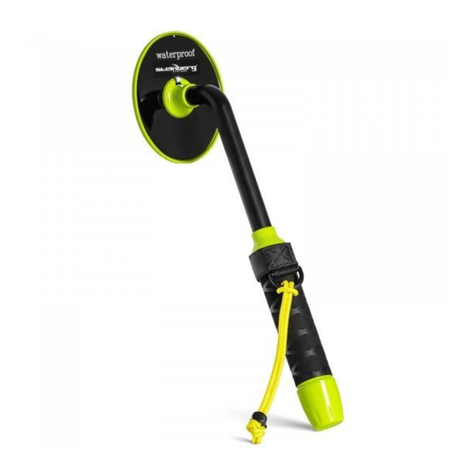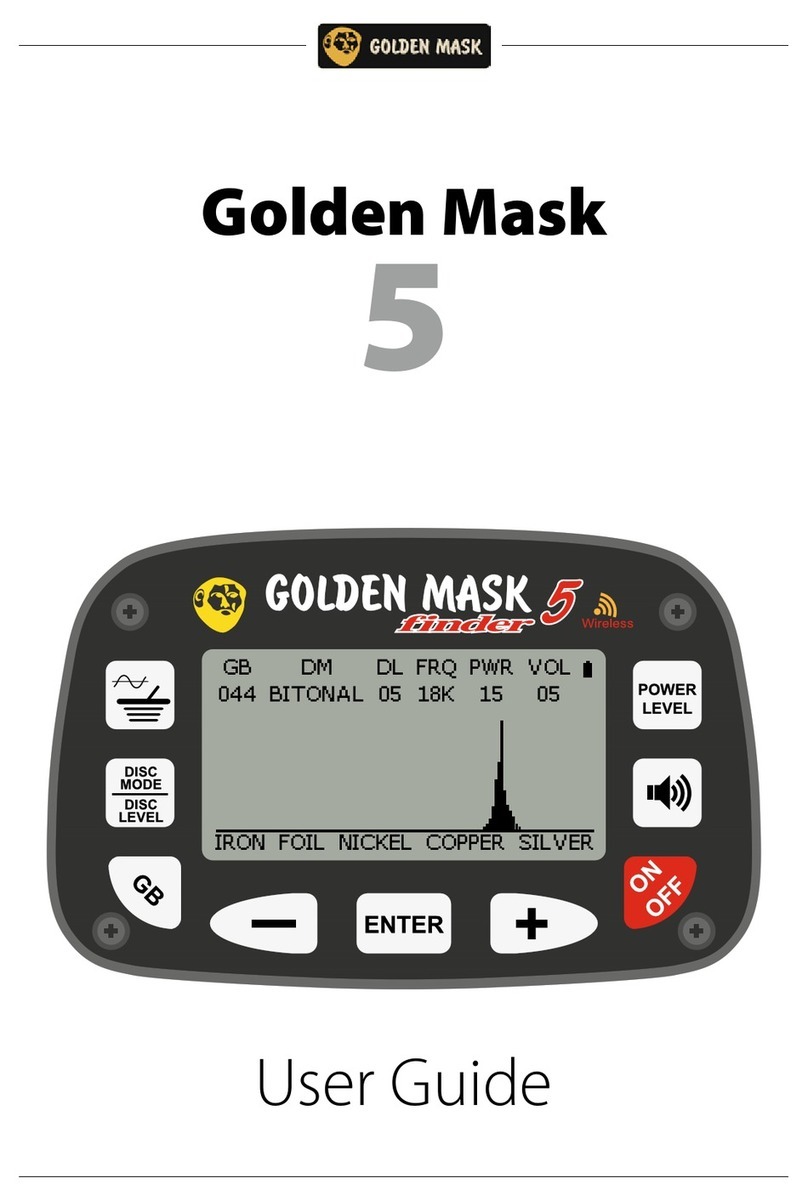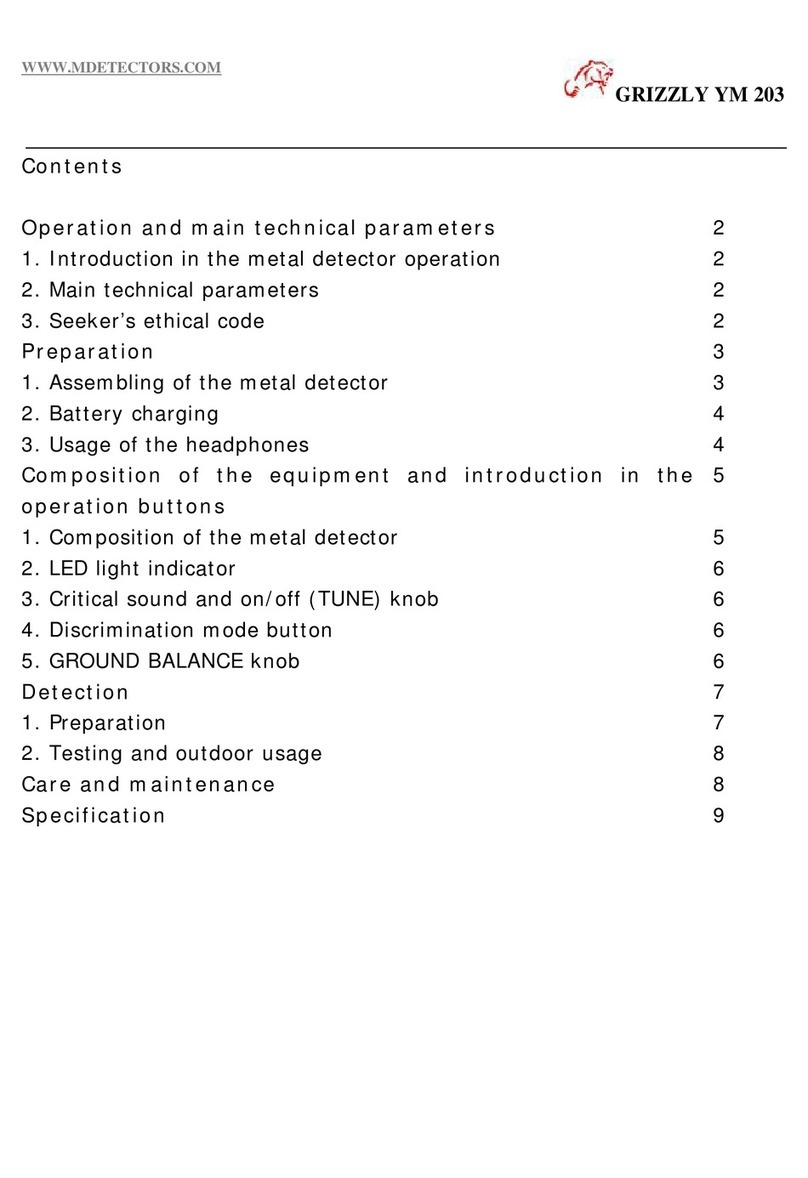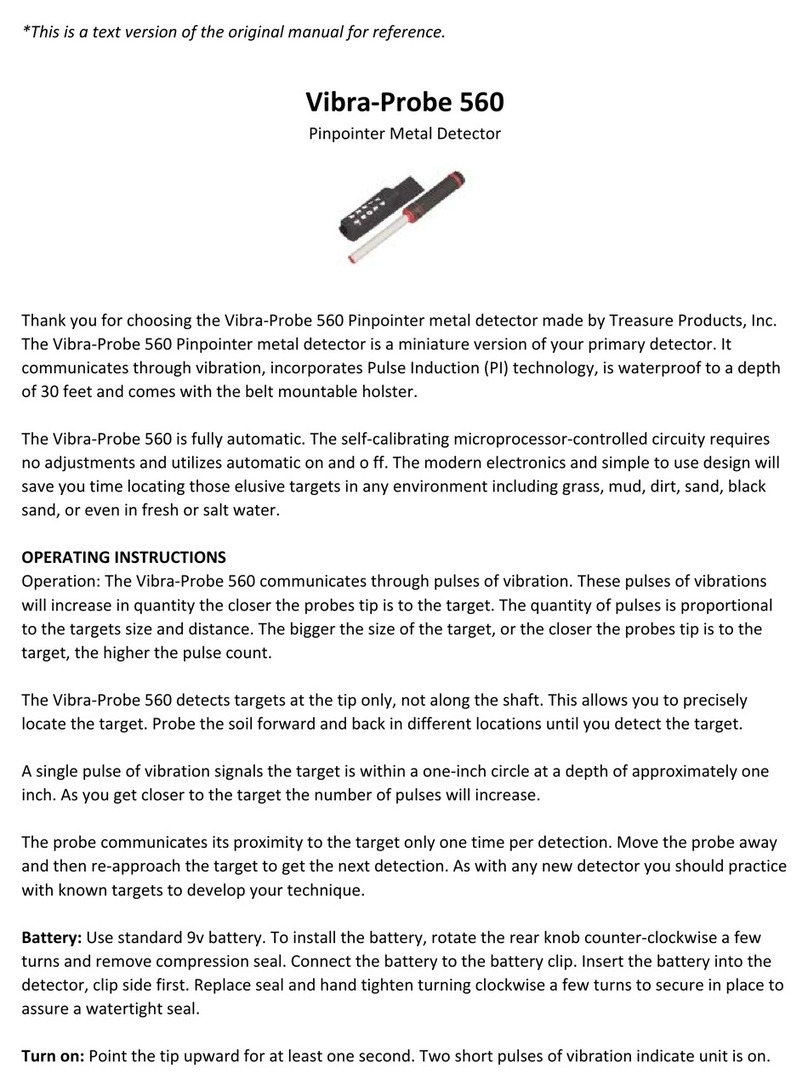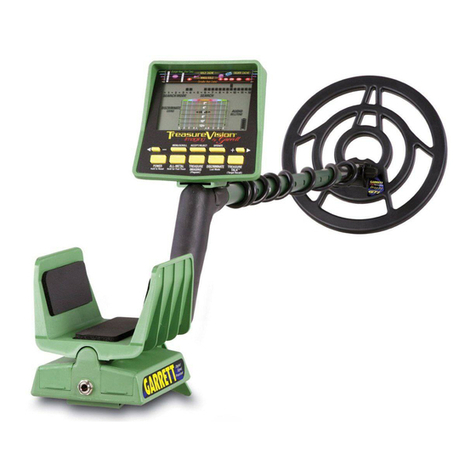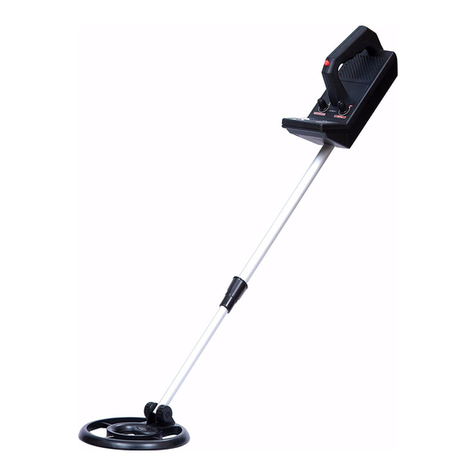Notsi Mole LRL 3000D User manual

Notsi, Ltd., Bulgaria, 9027 Varna, Troleyna 12 street
Ph.: 00359 899 822010; Fax: 00359 52 507227
Web: www.deltapulse.eu ; E-mail: [email protected]
Mole LRL 3000D operating manual 1
Mole LRL 3
Mole LRL 3000D
000D
Operating
Operating
manual
manual
Notsi, Ltd.
Bulgaria, 9027 Varna, Troleyna 12 street
Ph.: 00359 899 822010 ; Fax: 00359 52 507227
Web: www.deltapulse.eu ; E-mail: sal[email protected]

Notsi, Ltd., Bulgaria, 9027 Varna, Troleyna 12 street
Ph.: 00359 899 822010; Fax: 00359 52 507227
Web: www.deltapulse.eu ; E-mail: [email protected]
Mole LRL 3000D operating manual 2
Mole LRL 3000D works in accordance with the Molecular-frequency
discrimination principle. What’s typical for this device is that an unexperienced
operator can scan from 40 to 50 decares in 20-30 minutes. If the product detects
metal, it will be localized accurately. This depends on the depth of the buried
object and the period of stay underground. Mole LRL 3000D saves a lot of costs
and walking and if it does not detect anything, then, there is no metal in the
scope of the product. If the device detects a signal line, it has to be checked,
registered and specified. It is almost impossible for an experienced operator to
miss a real object in favourable weather conditions. Mole LRL 3000D also
detects signals from objects dug out long ago. Metal ions which have remained
in the soil after the metal has been removed are unmistakably detected after
many years. For this purpose, we offer an eliminator that unloads the ionic field
formed around the object during its stay underground. If the object has been
taken out by using the eliminator, the search line disappears; but if the object is
still there, the signal moves to its exact location. It is desirable when the location
of the object is found, to check it with a powerful metal detector of the pulse-
induction type, transmitter-receiver. Since the locator covers large depths, this
device will help you determine the depth, size and composition of materials.
By using LRL 3000D,a good operator can find frequency oscillations of various
metals at 5000 meters distance and at 60 meters depth. The registration of the
object depends on the quantity of metal, soil dryness and mineral content, period
of stay underground, weather conditions, and operator’s experience. LRL 3000D
can detect ore veins and lost treasures. It detects buried raw materials, explores
gold nugget areas, etc. Metals can be registered under water and through water.
When the two probes are stuck in the ground at a distance of 60 to 90 cm, they

Notsi, Ltd., Bulgaria, 9027 Varna, Troleyna 12 street
Ph.: 00359 899 822010; Fax: 00359 52 507227
Web: www.deltapulse.eu ; E-mail: [email protected]
Mole LRL 3000D operating manual 3
emit an electromagnetic field that spreads in all directions. It is the strongest
where the electrical resistance is the least. The field is distributed to the ground
by the soil moisture in a vertical and horizontal direction. As the distance
increases, the tension of the field decreases. If there is a metal in the area of the
detection, the product receives information, i.e. it traces and registers resonance
currents.
This resonance is between the probes and the object. After that, there is no line
to be registered, although the field goes further. If the soil is dry or rocky, the
currents flow along a curve and follow the moist soil. The most important thing
for the range of the detector is the size of the object. Large objects are detected
at a great distance, while small ones, like a bracelet or a coin - within 40-50
meters. Another important factor is the period the object spent underground and
the soil’s chemical composition. The longer the object has been underground,
the more metal ions have formed around it. The ions are formed from the
electrolytes in the soil. They locate around the object and make it larger and
easier to detect. Old objects that have stayed hundreds of years underground are
easier to discover than objects that have been buried underground for 2-3 years.
The other factor is the type of metal. The easier it is to get corrosion, the easier it
is to be detected. Iron is the most easily found metal because it gets corrosion
faster. Copper and copper alloys, bronze and brass, silver, etc. are easy to find
as well. Gold is the hardest metal to find because it has little chemical activity,
and that’s why the ions around the gold objects are few. Besides, gold is one of
the heaviest metals. For example, 5 kg of gold can be taken in a palm. Its small
and low chemical activity makes it hard to find. For instance, one litre of melted
gold is about 19 kg. The interesting thing about LRL 3000D is the way it registers
objects. The operator holds metal baguettes in their hands which move very

Notsi, Ltd., Bulgaria, 9027 Varna, Troleyna 12 street
Ph.: 00359 899 822010; Fax: 00359 52 507227
Web: www.deltapulse.eu ; E-mail: [email protected]
Mole LRL 3000D operating manual 4
slowly. Antennas are connected to the receiver with wires, which is self-powered
and is worn on the operator's belt. Baguettes should be hold slightly bent and
parallel to each other. Once the transmitter probes are stuck in the ground, the
locator should be switched on. The operator should wait for 5-10 minutes, and
then should start moving around the probe at a distance of 3-10 meters. If there
is a metal in the range (for which we set the transmitter), a search line is obtained
from the resonant currents between the locator and the metal. When the operator
crosses this line, the two baguettes cross. Exit the search line and the antennas
again stand in parallel position.
This effect is created by the
capacity and resistance of
human body with the
inductions of the receiving
module and forms a
broadband throbbing circle.
When crossing the search line,
this throbbing circle resonates
and the two antennas are
electrically drawn to each
other. The device may detect
signals in different directions
when scanning a larger area.
To specify which signal is
more interesting for us, a
gadget called collector should
be used. This device looks like

Notsi, Ltd., Bulgaria, 9027 Varna, Troleyna 12 street
Ph.: 00359 899 822010; Fax: 00359 52 507227
Web: www.deltapulse.eu ; E-mail: [email protected]
Mole LRL 3000D operating manual 5
a probe, but the cylinder is empty and a piece of the metal we are looking for
should be put inside (for example, gold, silver, copper, bronze). The collector
should be stuck in the ground between the transmitter probes and the operator,
who is above the search line. If antennas open, this means that the detected
signal is unreal or the detected metal is very small in weight. If antennas cross,
the search continues. The collector is a device that eliminates objects ten times
heavier than the collector itself. For example: If you put 20 g of gold into the
collector, you will eliminate an object that weighs up to 200 g. If you put 1 g of
metal, you will eliminate 10 grams. In this way, the operator can estimate the size
of the object they have found (Fig.2).
When selecting several collectors with different amounts of gold in them, we can
determine the weight of the object. When measuring from another location at 90
degrees to the first one, we can run a second line and when it crosses the first
one, we can find out the distance to the object (Fig. 3). As we go along the
second line and move towards the point of crossing in space, baguettes will not
cross.
Once you get to the object and step over it, baguettes will cross. Mark the place
with a rod, go on and see that antennas become parallel. This means that there
is no object further ahead. Now, the location of the possible metal object or the
ion field without metal is established. The ion field around objects buried long ago
move aside due to the Earth's magnetic field. The older the object is, the greater
the displacement is. The locator registers ions, because they have larger volume
than the metal itself. If there is a real finding, we can get its depth (Fig. 6).
Table of contents
